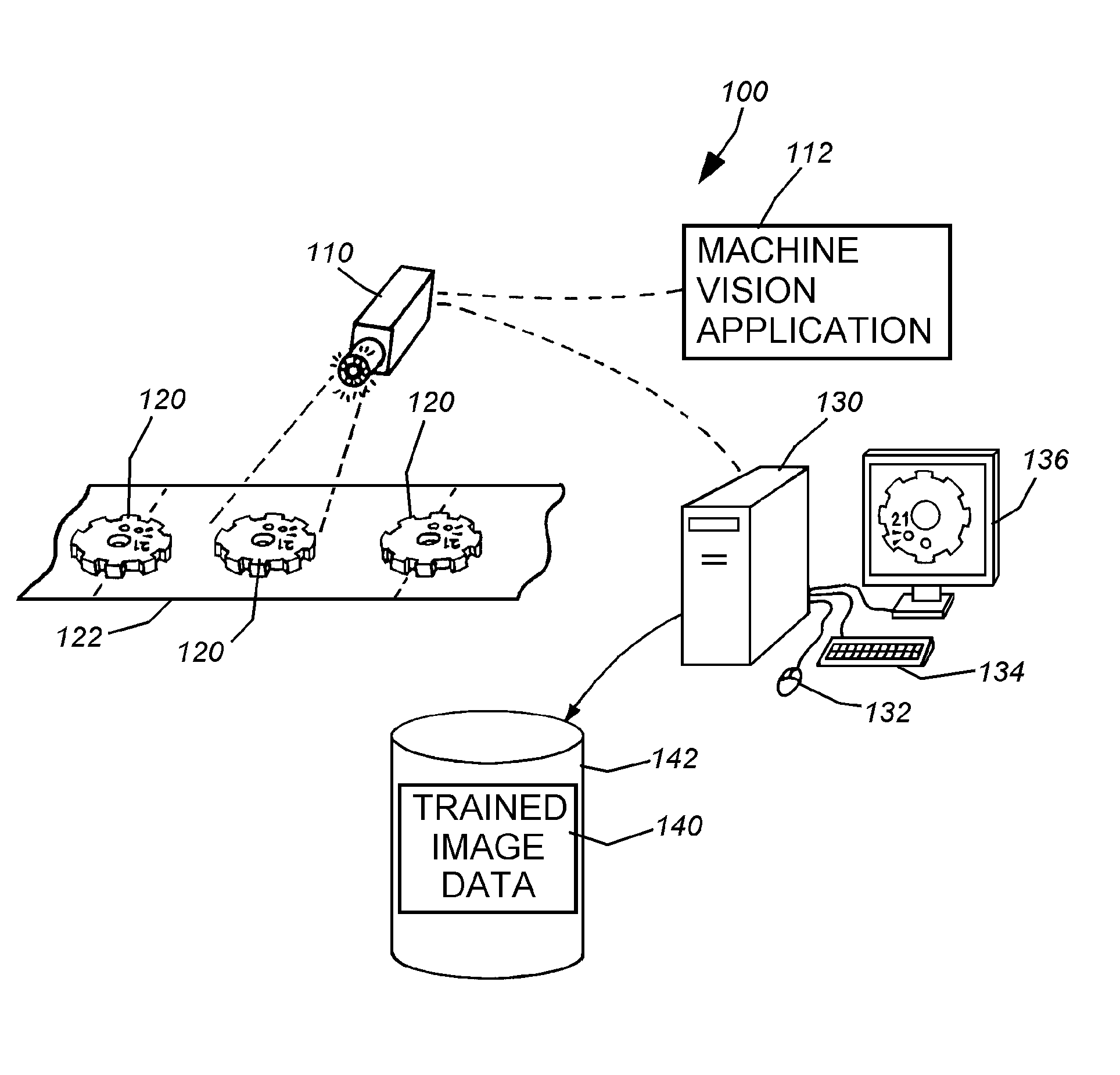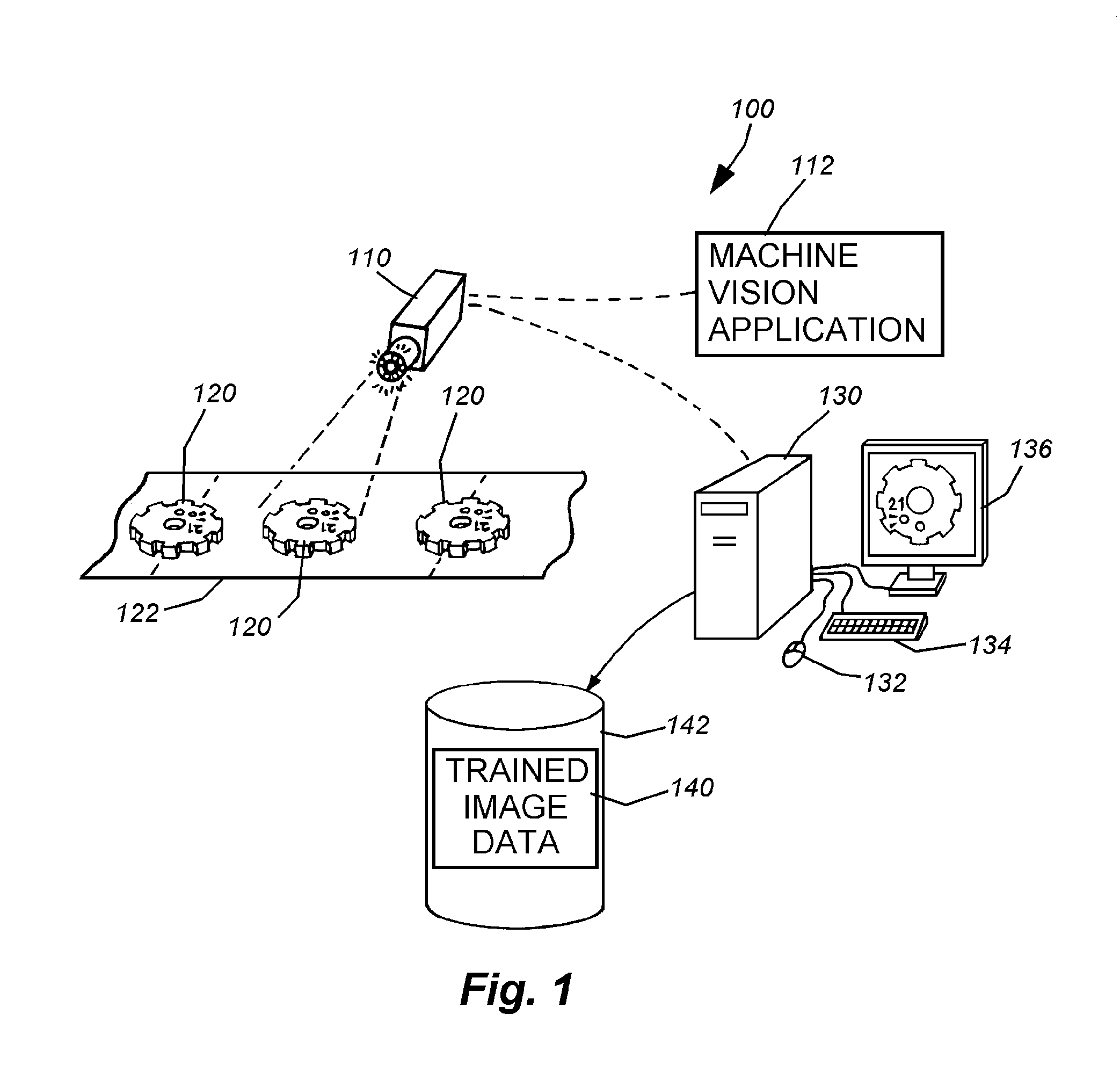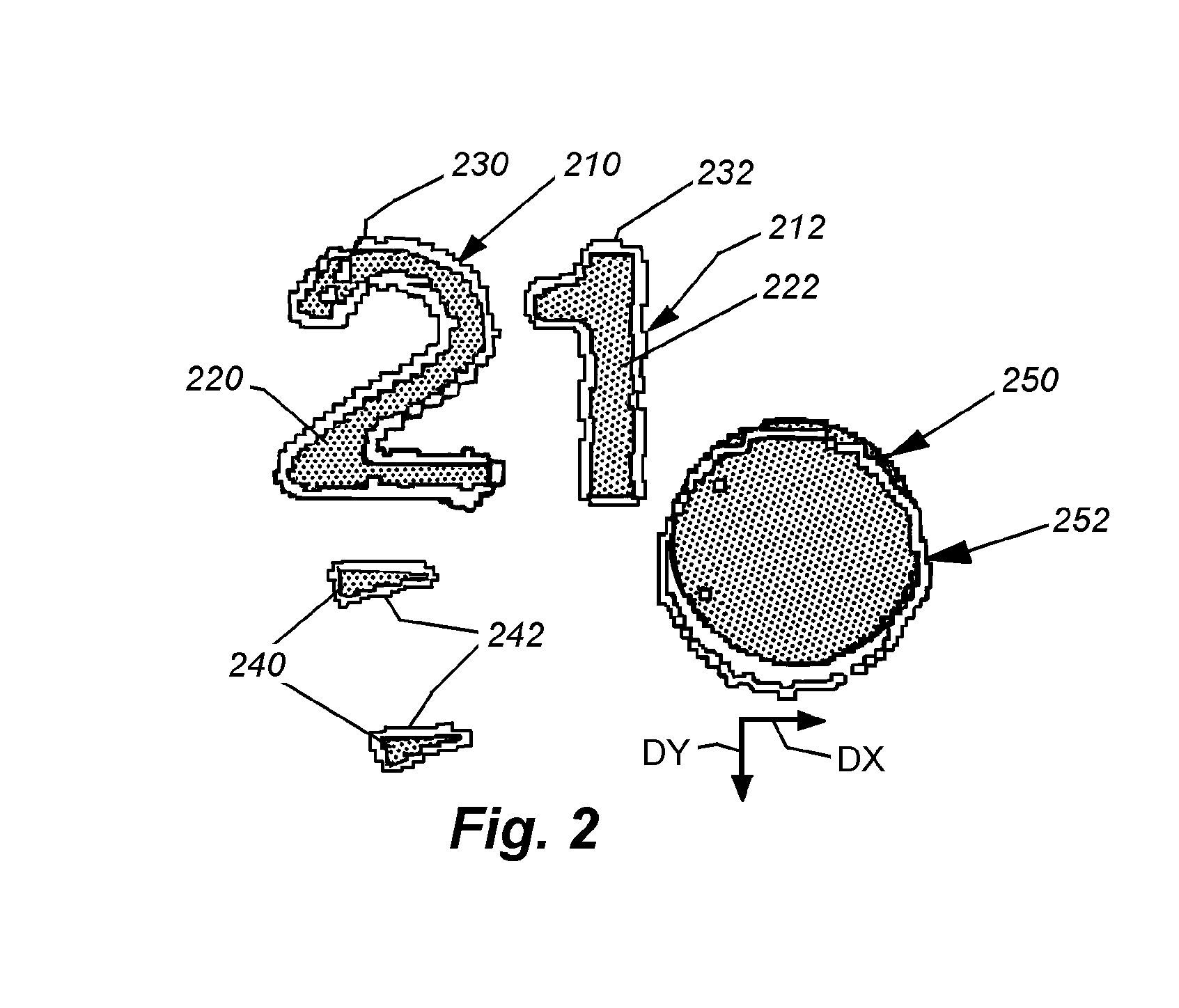System and method for detecting flaws in objects using machine vision
a machine vision and object technology, applied in the field of machine vision systems and methods, can solve the problems of mouse bites, defects or otherwise unacceptable, difficult differentiation of such tools, and non-critical surfaces that may contain molding defects, etc., and achieve the effect of greater flexibility in inspection
- Summary
- Abstract
- Description
- Claims
- Application Information
AI Technical Summary
Benefits of technology
Problems solved by technology
Method used
Image
Examples
Embodiment Construction
[0024]FIG. 1 details an exemplary machine vision system arrangement 100, which be employed in connection with the principles of this invention. It should be noted that a variety of system implementations can be employed in alternate embodiments. For example, a machine vision detector system in accordance with commonly assigned, copending U.S. Published Patent Application No. US200550275831A1, entitled METHOD AND APPARATUS FOR VISUAL DETECTION AND INSPECTION OF OBJECTS, by William M. Silver (the teachings of which are expressly incorporated by reference), can be employed in an alternate embodiment. As will be described in further detail below, the flexible flaw detection principles and procedures described herein are generally employed subsequent to the global positioning / registration of a live or runtime object image relative to a model or training image of the object, and prior to inspection of the runtime object or feature.
[0025]Referring to FIG. 1, the machine vision system 100 c...
PUM
 Login to View More
Login to View More Abstract
Description
Claims
Application Information
 Login to View More
Login to View More - R&D
- Intellectual Property
- Life Sciences
- Materials
- Tech Scout
- Unparalleled Data Quality
- Higher Quality Content
- 60% Fewer Hallucinations
Browse by: Latest US Patents, China's latest patents, Technical Efficacy Thesaurus, Application Domain, Technology Topic, Popular Technical Reports.
© 2025 PatSnap. All rights reserved.Legal|Privacy policy|Modern Slavery Act Transparency Statement|Sitemap|About US| Contact US: help@patsnap.com



